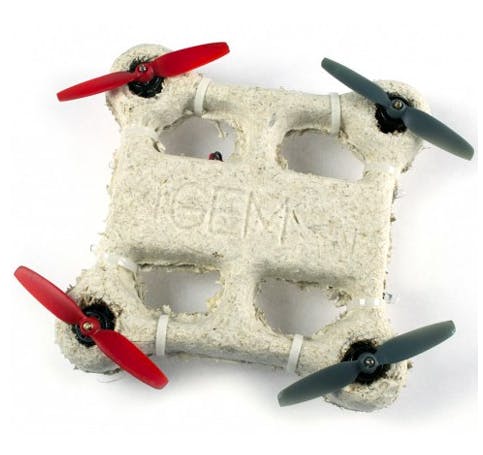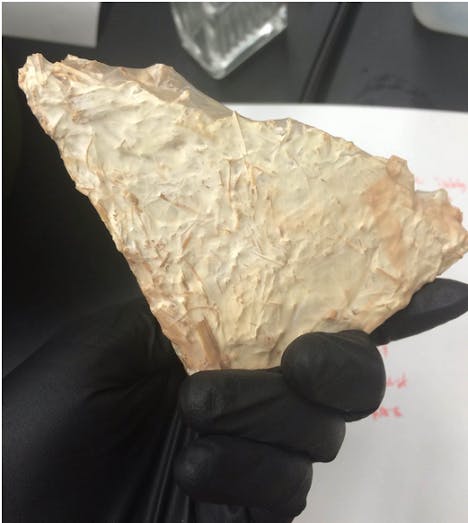A team competing in the 2014 International Genetically Engineered Machine (iGEM) competition has created a working prototype for a biodegradable drone made from fungal material.
The drone, designed by the Stanford-Brown-Spelman iGEM team with materials provided from New York-based biomaterial company Ecovative
Design, is intended to completely disintegrate if it were to crash outdoors. “No one would know if you’d spilled some sugar water or if there’d been an airplane there,” team leader Lynn Rothschild of NASA’s Ames Research Center told scientific journal New Scientist.
The primary material, a lightweight mushroom-like organic called mycelium, was grown in the shape of the finished prototype then covered in sheets of bacterial cellulose and coated with proteins cloned from the saliva of paper wasps to give the chassis rigidity. Yes, you read that right, the saliva of paper wasps.
Of course, the prototype could not be completely produced from biodegradable materials. The battery, rotor, and controls were all sourced from a normal mechanical quadcopter. The team is continuing to work on the project with the aim of making as much of it from organic materials as possible. Next on their agenda: figuring out how to create the drone’s sensors from E. Coli bacteria.
H/T Dezeen | Photo via Scott Darbey/Flickr (CC BY 2.0)




